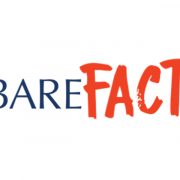Connecting with Your Target Markets During the Year’s Busiest Shopping Season
It’s that crazy time of year when marketers pull out all the stops to capture their share of holiday consumption. In the past, the day after Thanksgiving would launch the season’s retail insanity. In recent years, the holiday shopping season has started increasingly earlier. This year, it seems like “Black Friday” has turned into “Black November.”
Just as the time-frame has expanded, so have the ways to connect with consumers. With multiple devices and numerous traditional, online and social platforms, marketing has become progressively more complex. Never has it been more critical to understand who your market is and how you can best reach them.
Which generation accounts for the largest consumer spending?
The answer may surprise you. Here is a quick look at the three biggest spending groups—baby boomers, millenials and the often-overlooked “middle child,” generation X. According to Pew Research, there are around 77 million boomers and 83 million millennials. Because of their size, these two generational segments garner almost the complete focus of marketers. The smaller gen X segment, around 65 million, is typically awarded little regard, yet this generation is the most financially influential of the three and has the largest buying potential.
American Express research indicates that Xers have more spending power than any other generation, including the boomers. Although they only make up 25% of the population, the Xers account for 29% of estimated net worth dollars and 31% of total income dollars.
Connecting across target-relevant platforms
Whether you target boomers, Xers, millennials or all three, it’s important to know the best channels to connect with your audience.
Screen size, speed and performance, and length of task influenced device preference. The study showed that 81% of consumers across generations prefer to complete five-minute tasks via smartphone. That number drops to 43% for tasks that take between 10-20 minutes, indicating even millennials prefer laptop/PC for many high-involvement tasks.
According to Oracle Commerce, 40.7% of millenials shop online at least once a week, 36.8% shop on mobile and only 8.7% think seeing/touching is important before buying. Although 62.2% of millenials shop in-store at least once a week, 95.5% would check product info on their mobile while in the store.
By contrast, 16.4% of boomers shop online at least once a week, 4.8% shop on mobile and 20% think seeing/touching is important before buying. Seventy-four percent still prefer to shop in-store, but 68.4% would check product info on a mobile while in-store if possible. And 31.7% of boomers believe store staff should carry smart devices to handle customer inquiries.
Gen Xers fall somewhere in between. They grew up during the birth of technology, so they are comfortable with both traditional channels as well as digital media. According to Forrester Research, 48% listen to the radio, 62% still read newspapers and 85% have favorite TV shows. They are also quite active online for banking, shopping and researching products they want to buy. Like boomers, Xers develop loyal relationships with brands and are willing to pay a premium to brands they value and trust. However, like millennials, they will forsake brands that don’t reward their loyalty.
While all three generations may differ in their use of traditional and digital platforms, they have some key elements in common. They desire a seamless in-store and online experience, expect in-store staff to be equipped with technology for more informed, swifter and easier service, and want to be able to check product information in-store using their mobile devices.
Making sure you get it right
Accurately defining your target markets and implementing relevant strategies to connect is just the beginning. Customer research will reveal how well you’re hitting the mark. Many companies turn to firms like BARE to assess and monitor marketing efforts.
Customer Satisfaction (CSAT) Surveys provide instant results, unlimited feedback, and allow for customer incentives in exchange for completing surveys. Surveys are cost-effective and user friendly. Mystery Shopping uses calls, clicks and/or visits. BARE’s global workforce of evaluators follow predefined scenarios and record experiences at various touch points throughout the customer journey.
BARE also offers rapid-fire business intelligence (BI). Analysis can be done at a global and/or regional level to compare results between regions, countries, store types, chains and scenarios. BARE’s BI comprehensive reports include insights and conclusions derived from your data and can identify the evolution of results over time.
Effective marketing takes more effort and time than ever before. Make sure you are investing these resources wisely to achieve maximum success.











